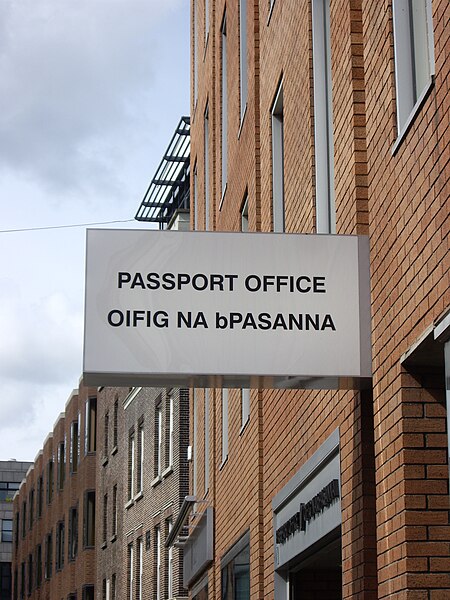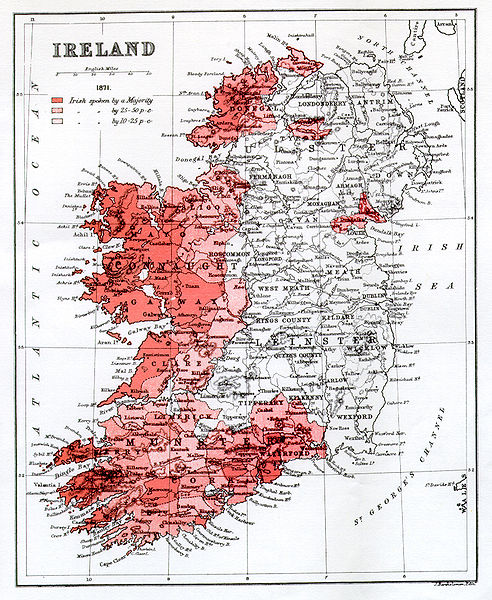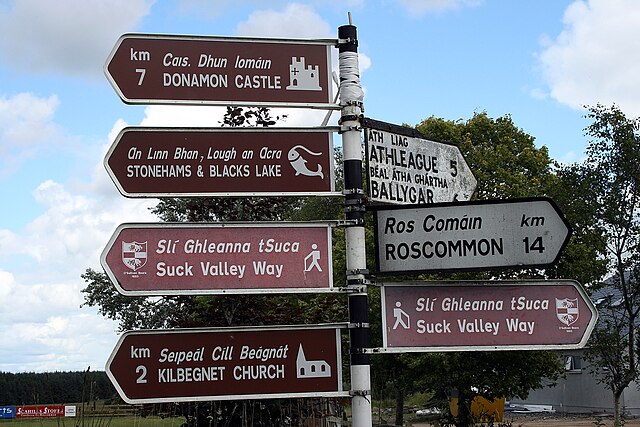Irish orthography is the set of conventions used to write Irish. A spelling reform in the mid-20th century led to An Caighdeán Oifigiúil, the modern standard written form used by the Government of Ireland, which regulates both spelling and grammar. The reform removed inter-dialectal silent letters, simplified some letter sequences, and modernised archaic spellings to reflect modern pronunciation, but it also removed letters pronounced in some dialects but not in others.
The traditional Irish alphabet carved in Gaelic type on a building in Dublin, with each type of diacritic (síneadh fada and ponc séimhithe) as well as the Tironian et.
An Irish road sign with a dotless ı in Comhaırle, obaır, maoınıú, Roınn, Oıdhreachta and Oıleán.
Íoc ⁊ Taispeáin ("Pay & Display") sign in Dublin with the Tironian et for agus "and".
Bilingual sign in Ireland. The eclipsis of ⟨P⟩ to ⟨bP⟩ uses lowercase in an otherwise all-caps text.
Irish, also known as Irish Gaelic or simply Gaelic, is a Goidelic language of the Insular Celtic branch of the Celtic language group, which is a part of the Indo-European language family. Irish is indigenous to the island of Ireland and was the population's first language until the 19th century, when English gradually became dominant, particularly in the last decades of the century.
Today, Irish is still commonly spoken as a first language in areas of Ireland collectively known as the Gaeltacht, in which only 2% of Ireland's population lived in 2022.
The distribution of the Irish language in 1871
Bilingual sign in Grafton Street, Dublin
Bilingual road signs in Creggs, County Galway
Dublin airport sign in both English and Irish languages








